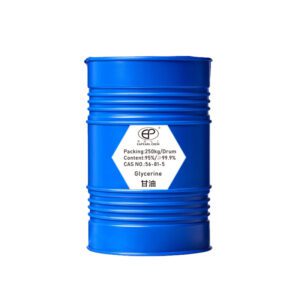Introduction
Ah, glycerol. Folks, we’re talking about a molecule that’s as versatile as a Swiss Army knife and as reliable as your grandma’s secret recipe.
Wondering how this slippery fella weaves its magic across so many industries? I mean, from pharma to fireworks, this compound is popping up more often than a nosy neighbor.
So here’s the skinny: glycerol is the “Renaissance man” of the chemical realm, a universally handy compound for a range of applications.
Ready for a deep dive? Buckle up!
Why is Glycerol So Universally Used?
Let’s cut to the chase, shall we? Glycerol is in high demand for a reason.
- What is the Chemical Structure of Glycerol?
- How is Glycerol Produced Commercially?
- Why Did Ancient Egyptians Use Glycerol?
- How Does Glycerol Contribute to Pharmaceutical R&D?
- What’s the Connection Between Glycerol and Biofuels?
- Is Glycerol Really Eco-Friendly?
Take a peek at these studies and stats.
More on the ‘Why’ of Glycerol
What is the Chemical Structure of Glycerol?
Glycerol is the Tom Hanks of molecules. Universally likable and fits well into any role. Its unique molecular structure is what makes it ideal for multiple applications.
You see, it’s a simple polyol compound. But don’t let the “simple” tag fool you. This guy packs a punch in various industrial sectors.
How is Glycerol Produced Commercially?
From the get-go, glycerol shows off its versatile chops. Whether it’s old-school soap-based methods or modern enzymatic ways, glycerol adapts like a chameleon on a rainbow.
Trust me, folks, if glycerol were a person, it’d win an Oscar for the best-supporting actor in the chemical industry.
Why Did Ancient Egyptians Use Glycerol?
We’re not just talking modern-day fads here. Glycerol is old school, like, ancient Egypt old school. It was even used for mummification. Yup, you heard that right!
You have to give credit where it’s due. Glycerol is the Methuselah of chemicals; it’s been around and still refuses to go out of style.
How Does Glycerol Contribute to Pharmaceutical R&D?
When it comes to pharmaceuticals, glycerol is your guy. As a solvent, sweetener, and moisture-retainer, it’s got the trifecta of utility.
If glycerol had a LinkedIn profile, it’d have an endorsement for “Skills in R&D” from every pharma company out there.
What’s the Connection Between Glycerol and Biofuels?
Imagine driving your car on a diet of organic kale smoothies. That’s how green your vehicle goes when it runs on glycerol-based biofuel.
Not only does it cut down emissions, but it also proves that being eco-conscious can also be cost-effective. How about that for a win-win?
Is Glycerol Really Eco-Friendly?
Here’s the kicker: glycerol is easier on the planet than a vegan at a salad bar. In terms of its environmental impact, this compound leaves a footprint as light as a feather.
So, is it green? You bet your biodegradable socks it is!
Conclusion
Alright, let’s land this plane. Glycerol is like the Swiss Army knife you never knew you needed. From skincare to biofuels, it’s the go-to for, well, almost everything.
If you’re not already investing in glycerol-based solutions for your business, well, what are you waiting for? A telegram?





















